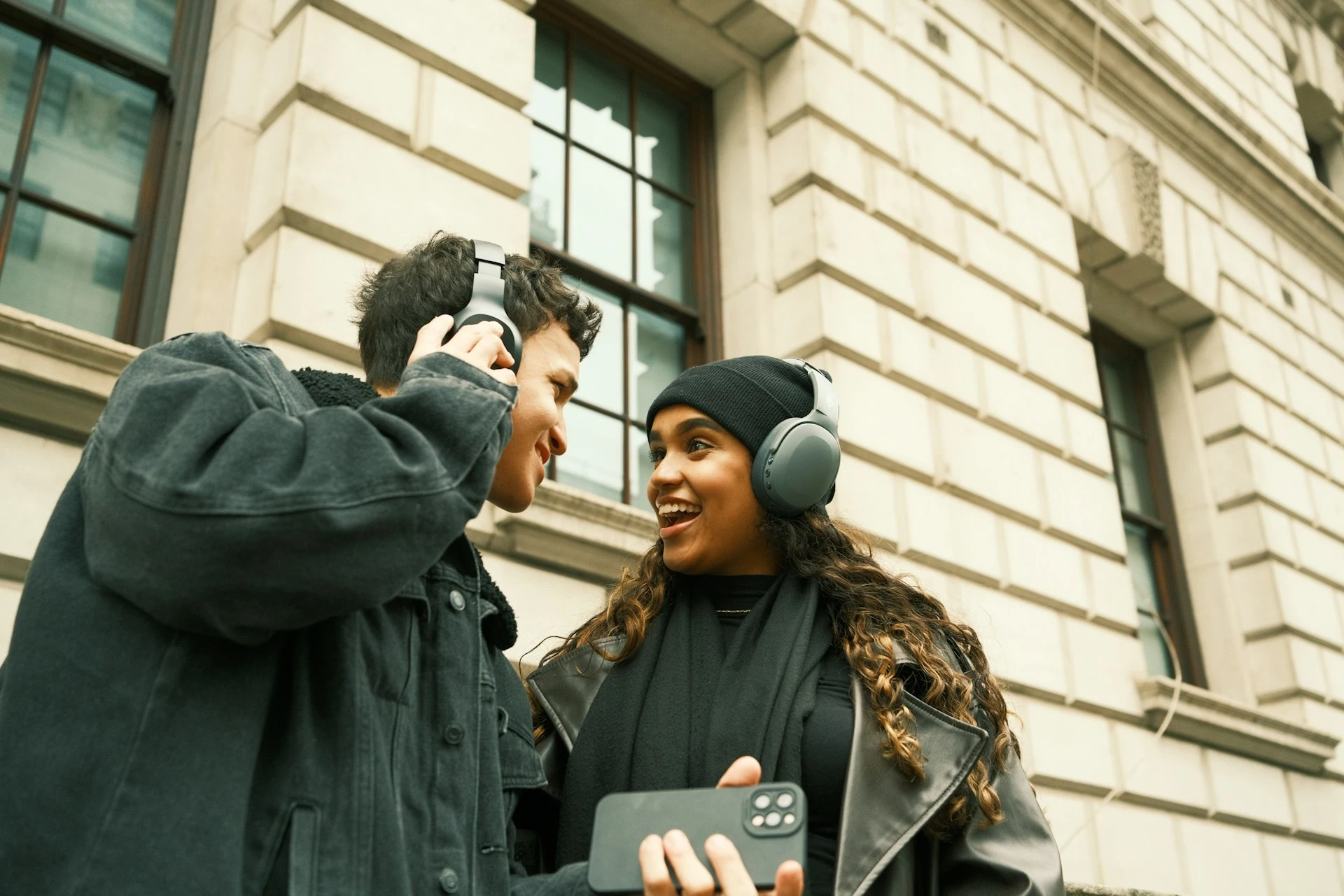Cracks in the foundation
Black Friday and Cyber Monday (BFCM) have evolved from single-day sales events into an extended holiday season that tests every aspect of your e-commerce operations and makes or breaks online customer experience. In 2025, shoppers already started holiday shopping as early as September.
By late November, your platform faces sudden traffic spikes that expose performance bottlenecks within seconds. Your brand must cut through unprecedented noise to reach customers bombarded with hundreds of competing marketing campaigns. Your support teams brace for waves of repetitive inquiries that risk burnout and service quality degradation.
Tech, marketing, and support
Yet all these challenges are predictable and, with the right prep, manageable. Whether you're weeks away from Black Friday or already discussing e-commerce strategies for holiday campaigns in 2026, this guide from three retail experts offers both short-term strategic tips and long-term tech considerations to help your brand plan ahead and use peak season as a catalyst for sustainable growth.
Ask Phill addresses platform performance under pressure. Voyado talks about personalization that turns a single sale into an ongoing relationship. Kindly discusses AI agents that automate customer support at scale. We'll begin where peak season pressure hits first — your platform's ability to perform when Black Friday shoppers flood your site for bargain deals.
Speed, scalability, and clarity
Over the years, Black Friday transformed from a single-day event to a stress test for every part of your e-commerce platform. It's the busiest shopping period of sudden holiday traffic spikes and peak checkout flows. In 2024, more than half of all holiday purchases happened on mobile devices, accounting for 54.5% of sales, so it's impatient mobile shoppers who expose your weaknesses fast.
Slow load times, crashes, and confusing navigation can cost thousands in lost sales within minutes. No brand is immune to this unless the platforms are built to handle the surge. The best way to prepare for peak season is to engineer your platform for speed, scalability, and clarity under pressure.
Website and mobile performance
Every second counts, so optimizing website and mobile performance is crucial for e-commerce success in the 2025-2026 holiday season. Shopify reports that a one-second delay reduces conversion rates by 7%. Compress assets, limit third-party scripts, and test your store with load simulations before the big day.
When Patta Exclusive Sneakers relaunched on Shopify Plus, their 15% faster site speed translated directly into 17% more sessions and higher average order value (AOV). Even milliseconds can impact customer trust and conversion.
Fast, seamless checkout
Next, focus on checkout resilience. Offering a fast, one-page checkout can minimize cart abandonment during online shopping — that's where you win or lose revenue. Simplify the process by reducing unnecessary fields and ensure discount codes work seamlessly. Flexible payment options like Apple Pay and Shopify Pay are essential for capturing mobile shoppers who expect familiar payment methods.
Ask Phill’s work with Veloretti showed that optimizing the product-to-checkout journey — through a rebuilt product page (PDP) and multi-step configurator — delivered a 15% conversion lift. The same principle applies during BFCM — fewer barriers, more completed orders.
Clear shopping journey
Beyond speed, focus on UX clarity across the customer journey. Avoid cluttered pages and ensure intuitive navigation, especially on mobile. At fonQ, Ask Phill used Algolia for the entire product listing experience, powering collection pages as well as search results, responsive to thousands of attributes across 200,000+ products. This reimagines product discovery in a way that's especially relevant for Black Friday and the rest of peak season, when time-pressed shoppers browse quickly.
Personalization is a must
Every year, peak sales season gets noisier, faster, and more competitive. Holiday shoppers are bombarded with hundreds of offers, but when every message looks the same, attention disappears fast.
Online retailers relying on one-size-fits-all campaigns and on-site messaging risk losing not just clicks but also conversions, customer loyalty, and brand trust. A lack of personalization leaves your customers scrolling through irrelevant deals — they feel unseen and will likely bounce.
This leads to lower engagement rates, poor campaign ROI, and wasted ad spend during the most crucial week of the year. Success in 2025-2026 depends on how well retailers know their customers and how effectively they act on that knowledge.
Personalization powered by strong customer data isn’t about doing more marketing — it’s about a smarter holiday marketing strategy that connects with customers at the right moment, with the right message.
Analyze past performance
Analyzing data and customer behavior across past purchases can inform effective e-commerce strategies for 2025-2026. Data from Voyado's Black Week Benchmarks 2024 shows that spending peaked early. Monday through Wednesday brought the biggest gains, while Sunday, with the deepest discounts, saw a sales drop in contrast to peak shopping days.
So personalization isn’t just about what you offer but when and how you communicate it. Early-bird promotions, payday-timed offers, and personalized reminders can capture that early-access momentum.
Identify customer segments
During Black Week 2024, women made 63% of all purchases, averaging €53 per purchase, while men spent 68% more per transaction. Retailers who understand and act on these behavioral differences across customer segments, as they target women with flash deals and men with premium bundles, will avoid the pitfalls of generic segmentation and drive stronger results in 2025-2026.
The same applies across channels — businesses should use dynamic content to personalize customer interactions during the 2025 holiday season. For email marketing, for example, use past engagement, purchase history and spend tiers to craft messages that feel personal. Curated collections and exclusive early-bird discounts helps to reward loyal customers and drive early purchases. Premium holiday packages are great for high-value customers, and storytelling targets browsers who haven’t yet converted.
Think of the post-purchase journey
Remember, the customer journey doesn’t stop at checkout — a seamless, personalized delivery experience with clear updates and branded tracking can leave a lasting impression. Creating memorable post-purchase experiences can foster customer loyalty and encourage user-generated content (UGC) on social media.
Touchpoints like delivery notifications and follow-up emails are prime opportunities to build trust, strengthen your brand, and inspire loyal customers. Implementing loyalty programs with exclusive perks can incentivize post-holiday sales. Even a simple thank-you or loyalty reward can turn a single holiday season sale into an ongoing relationship.
Holiday support without a burnout
Providing excellent customer service is especially crucial during the holiday season due to increased inquiries. Your customer support teams are about to face an onslaught of avoidable, automatable issues. Get ready to face a tsunami of “Where’s my order?” (WISMO), “How do I return this?”, and “Is this still in stock?”
The sheer volume of these continual, repetitive tasks puts serious pressure on your team, often leading to heightened stress and the real risk of burnout. Upholding service quality in the midst of this influx is easier said than done, and human failings often get in the way.
The key challenge is to leave the automatable to AI and let the human minds in your team focus on the complex, high-value customer issues that truly drive loyalty and satisfaction during this intense commercial period. For example, using AI for proactive communication about shipping delays can address customer concerns even before they reach out.
AI automation tools are changing the world, and it shouldn’t be difficult for you as a leader to prepare your team and offer clear and efficient strategies. As your team looks to you to have answers to their challenges, make sure you focus on proactive measures to maintain service quality and prevent team burnout.
The rewards of setting up the right systems ahead of Black Week are immense. Take Unisport, the premier online destination for football enthusiasts. They faced the double challenge of Black Friday promotions plus the hype around the 2022 FIFA World Cup.
Unisport integrated Kindly's support chatbot into their existing systems to handle order status, returns, and product availability inquiries. This resulted in a 52% automation rate, 50% fewer emails, and a 95% success rate.
Kevin Ishøj, Head of Country Operations at Unisport, says the human impact was equally clear: "We no longer feel the pressure of peak periods. During Black Friday, we used to extend our opening hours, but now we've actually reduced them thanks to fewer customer inquiries."
AI-powered support chatbot checklist
Holiday season preparation comes down to building the right foundation for your customer support team. If you are able to check everything off this list below, you're ready for peak season.
Anticipate common questions
Compile a list of FAQs. Focus on order tracking, return policies, and stock availability. Prepare clear, standard answers for your team to use. This reduces response time.
Automate first-level support
Use an AI support agent with chatbot tools to instantly answer repetitive questions like WISMO — the best support teams resolve simple tickets before they reach an agent.
Structure your chatbot responses
Design clear conversation flows. Customers should find their answer quickly or be directed to the right place. Ensure the bot can gather necessary information, such as an order number, at the start of the interaction.
Define clear handoff paths
Create seamless chatbot-to-agent handovers. Your bot must transfer full conversation history so your team understands context instantly and helps customers without making them repeat information.
Empower agents with the right tools
Give your team a unified customer overview by integrating order management and support platforms. When your bot has all info in one place, it solves problems faster, which improves both agent efficiency and customer satisfaction.
About Ask Phill
Europe’s leading design and development Shopify agency that specializes in large-scale Shopify-plus migrations and (re)builds. Empowering brands to move faster, run smoother, and sell smarter.
Visit Ask Phill
About Voyado
The leading Customer Experience Suite for Retail, combining customer engagement, AI-driven product discovery, and retail media to enhance CX and increase revenue across channels.
Visit Voyado
About Kindly
Kindly is Europe's most reliable agentic support platform, helping leading enterprises create AI Support Agents that scale automated customer support across every channel.
Visit Kindly
About Ingrid
Ingrid fixes everything that's wrong with delivery for retailers and shoppers. The delivery experience platform that grows conversion and loyalty while increasing shipping revenue and profitability.
Learn how to keep online delivery promise during peak season






